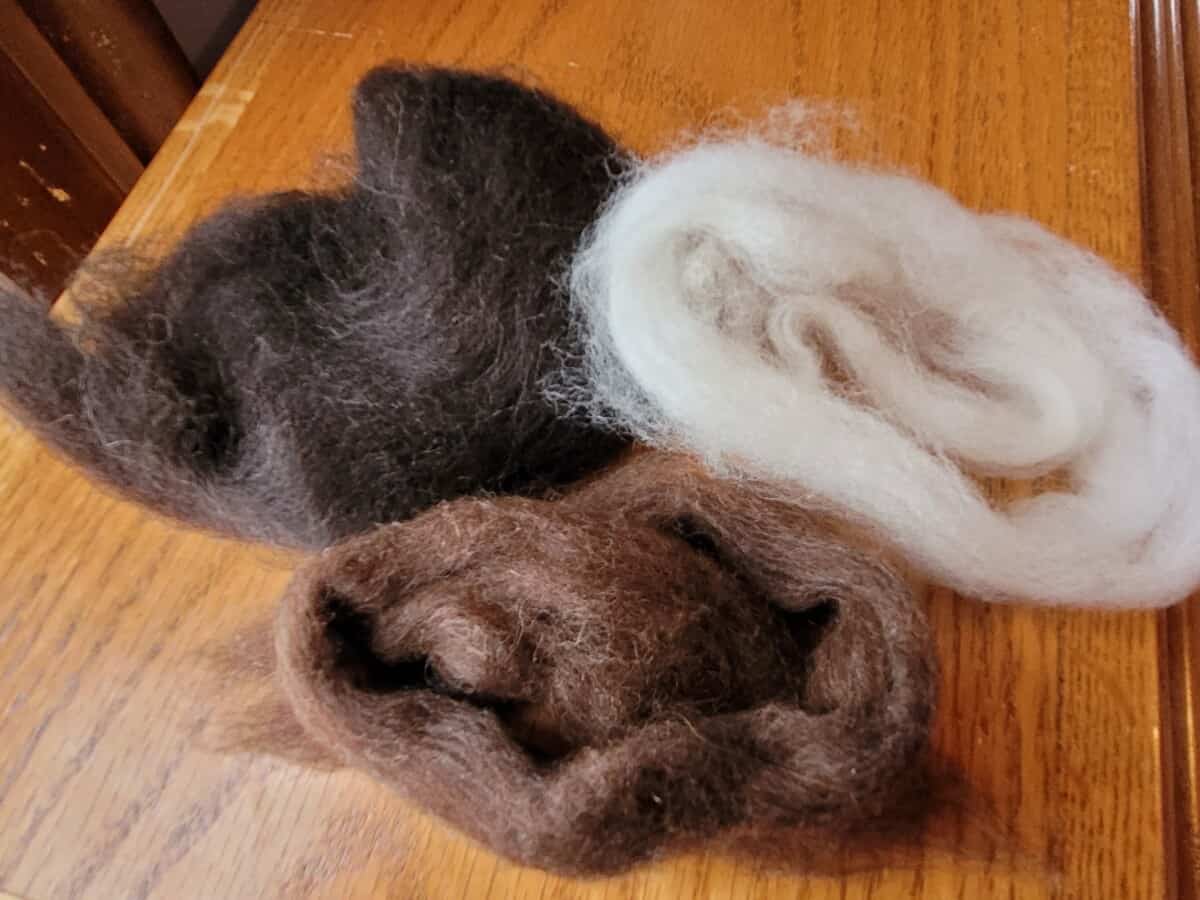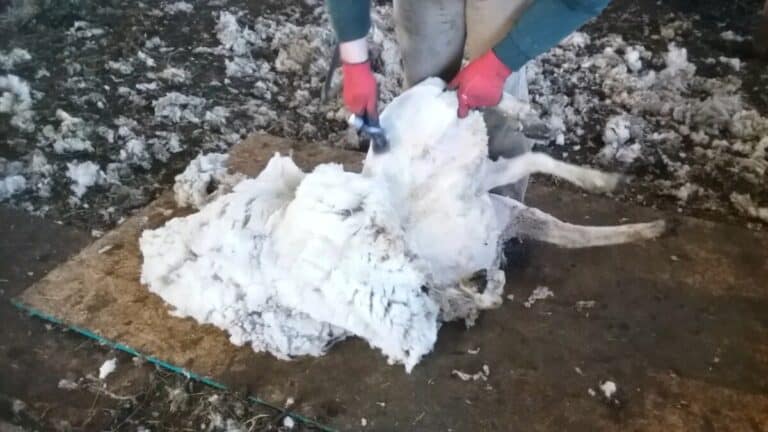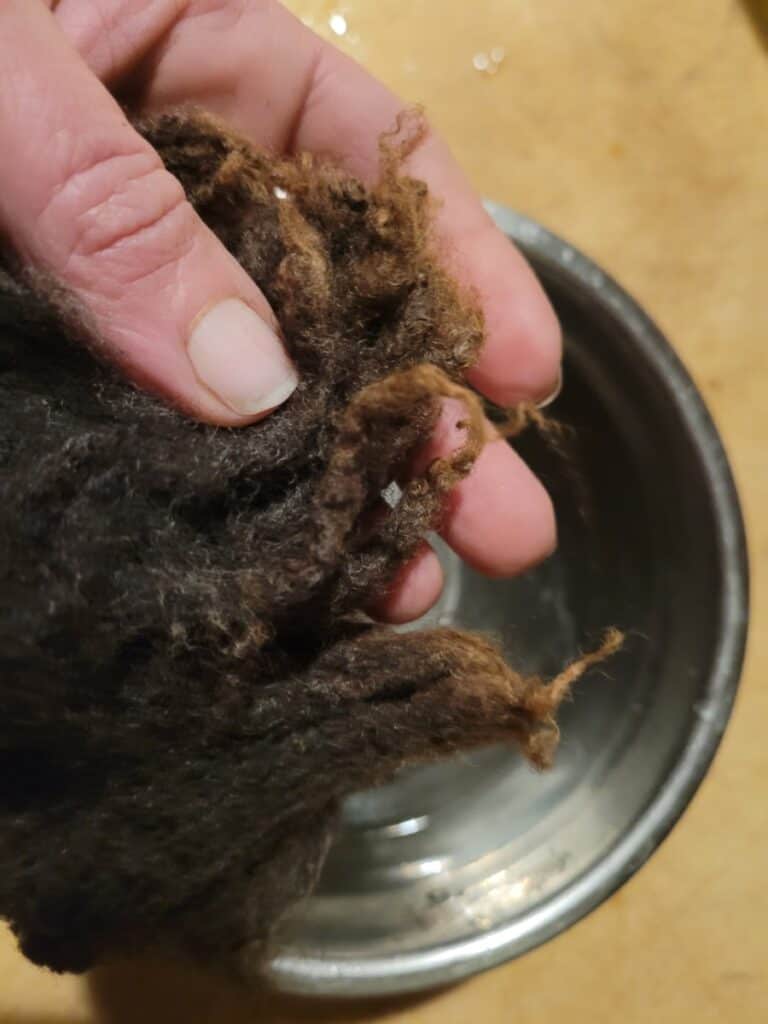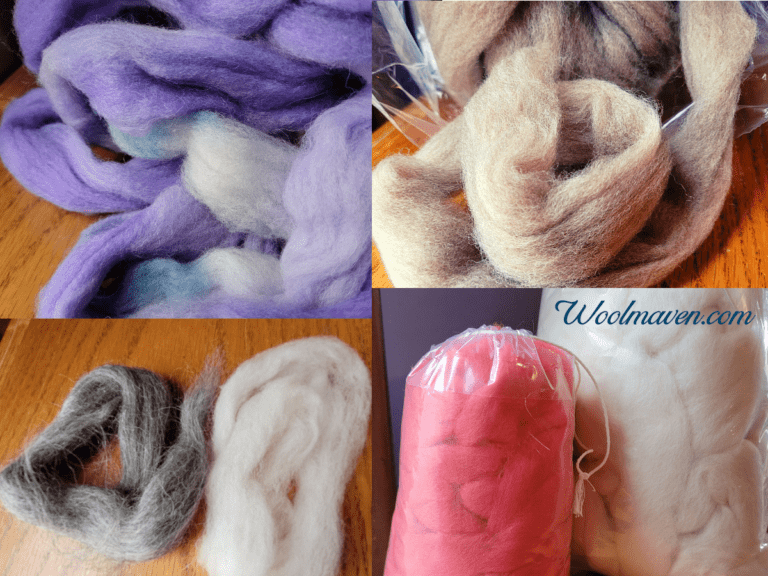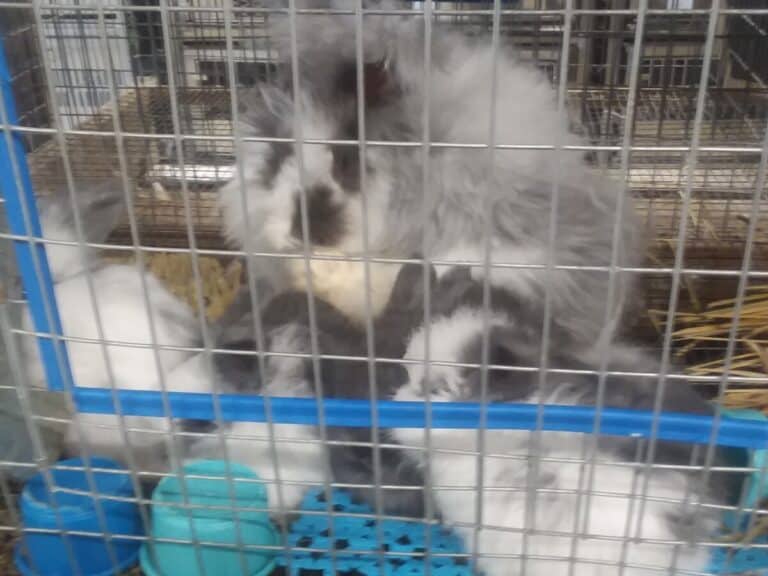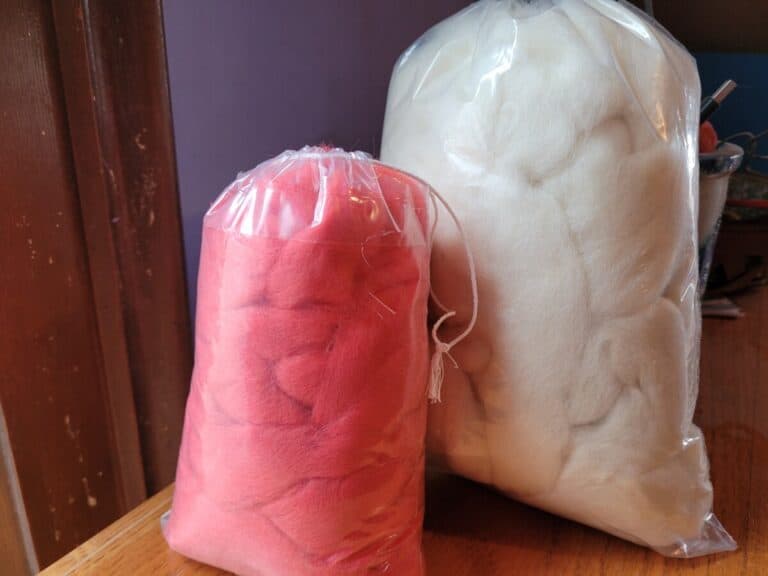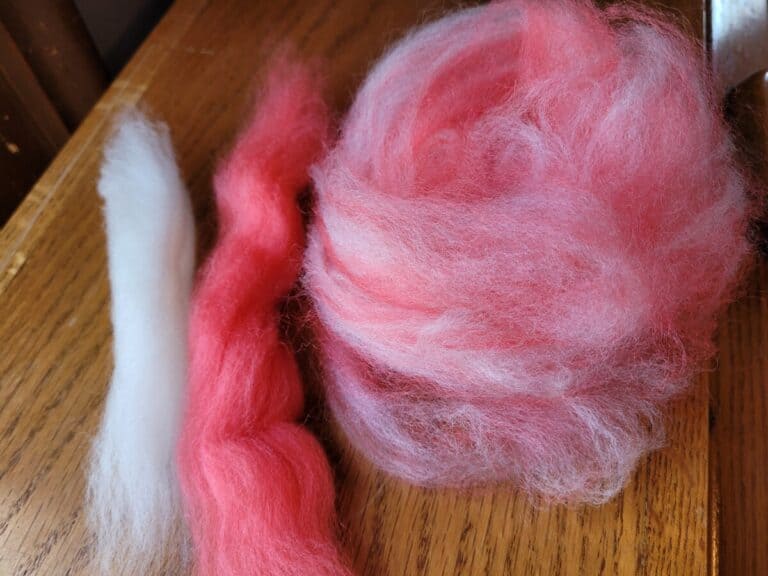Is Roving Made Out Of Wool?
Roving for handcrafting is available for sale in almost any online craft supplier, but what exactly is it? What is roving made of and what are the options that you can purchase?
Roving is ready to spin fibers that are made out of wool, plant fibers, fiber from other fiber producing animals or synthetically made fibers. Roving can be 100% of one type of wool, a blend of wools, a blend of wool and other spinnable fibers or made from 100% non wool fibers.
Can You Handspin Combed Top? gives you the details on when you would want to use this commonly available spinning fiber.
Roving is made of ready to spin fibers
Roving is prepared fibers that are ready to spin.
These ready to spin fibers are most commonly made out of wool, but they can also be made of a variety of non wool spinning materials, including plant fibers and synthetic fibers.
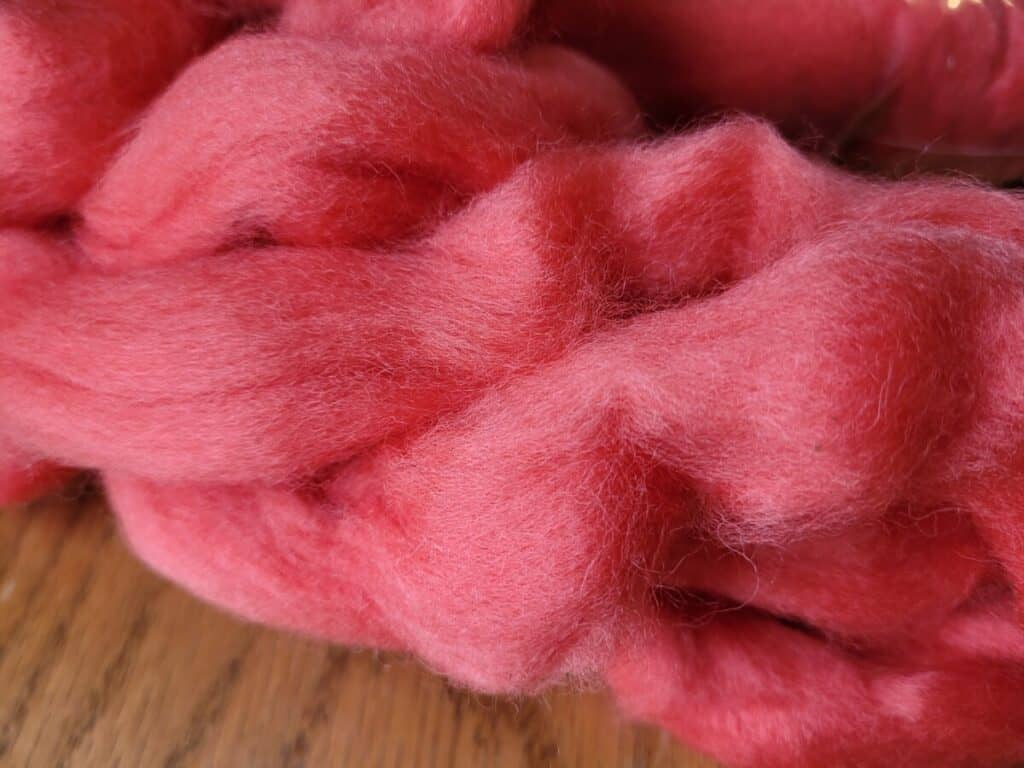
Roving can be made of one fiber
Most commonly, roving is made of wool from one breed or type of sheep. This wool roving will have the spinning characteristics that the breed is known for in a very easy to use form.
Popular wool rovings by breed of sheep are: Corriedale, Merino and Shetland.
With the rising interest of handspinning and the ability to ship wools worldwide, there are also new to you breed based rovings that are available for you to experience.
Examples of usual breed based wool rovings are: Gotland, Herdwick, Hebridean and Zwartbles. All breeds of sheep that are hard to find here, but are now available for handspinners.
Roving or Sliver: Which is best for handspinning and why? goes over the reasons you would use one over the other.
Roving can be made of a combination of wools
Wool roving can also be made of a combination of wools from different breeds or different colored wools from sheep of the same breed.
For instance, combining the wool roving from a naturally colored Corriedale and a white Corriedale into one roving will give you either a stripe, like a candy cane, or a heather, which is the colors evenly blended.
This roving is 100% Corriedale, but will look different when you spin it than an all white roving and each of the prepartions, striped or heather, will look different from each other when spun.
Roving can be made of a wool and non wool combination
Roving can also be made of a combination of different wools or of wool and plant or synthetic fibers.
These roving blends are popular with handspinners who want the characteristics of more than one fiber in their yarn.
For example: you may want to spin a very soft yarn, like a Merino, but also want a bit of sparkle in your finished garment, so you would look for a roving blend with angelina or firestar fibers in it as well.
This combination of Merino and sparkle will get you a wonderfully soft and warm yarn with a hint of sparkle to add a bit of interest to your finished piece.
Another option is to go with a wool and silk blend or a wool and other plant fiber blend, like wool and bamboo.
Roving can be made of 100% plant material
A final type of roving can be made of 100% plant material. I have not worked with any plant based rovings, myself, so I can’t speak to how they spin up.
Plant based rovings can be made from: bananna, bamboo, cotton, flax, mint, pineapple and stinging nettle. I’m sure there are more, these are just the ones I have seen listed for sale as roving.
Roving can be made from other fiber animals
Roving made from the hair (versus wool) of other fiber animals which would include roving made from Angora, mohair, and yak, as easy examples.
These non wool rovings are normally more of a challenge to work with, since the fiber is more likely to be slippery and require some additional skills on the part of the handspinner.
Commonly roving with these other animal fibers in it is combined with wool to make it easier to work with for the handspinner.
Combinations that you’ll see are alpaca and wool, Angora and Merino and Mohair and wool.
Of course, these wonderful non wool fibers can be spun on their own, but they are normally mixed in with wool to make them more manageable and lower the cost of the spinning fiber.
You can make your own roving
You can make your own roving, from wool that you prepare yourself or from wools that you purchase then combine into interesting roving blends that are custom made for your specific project.
Making your own roving also allows you to experiment with different wools and other fibers to see which combinations in which amounts suit you the best.
Your imagination is the only limit with roving blends! Making your own roving also allows you to make something that you can not find from an online shop.
This is especially true if you are wanting to make a very specific yarn or color of yarn that is hard to find and you are willing to dye roving to your project’s specifications.
Choose the roving to fit your project
You should choose the roving that will fit your project. This means that you need to know what it is you are hoping to do with the roving you purchase.
You could have an end yarn in mind or be looking to expand your spinning experience by trying out new to you wool rovings and wool combinations.
Here are the basic, get you started with roving ideas:
- easy to work with for new spinner, go with Corriedale roving
- next to skin soft, go with a fine wool, like Merino or Rambouillet
- bouncy yarn that will spring back into shape, go with a crimpy wool
- roving that is naturally colored, choose breeds like Shetland
- durable yarns for tough wearing goods, like rugs, go with a long wool like Wensleydale or Teeswater
- shiny yarn that is fun to knit, consider a long wool like Gotland or Blue Faced Leicester
Here are some of the more interesting roving options to consider for your next spinning project:
- Fine wool blend, a fine wool mixed with another fiber, like Angora
- Non wool roving, use a 100% alpaca roving
- Rare breed roving, experience working with a rare wool
- Make your own! get the separate materials and make your own custom roving
Read Roving And Sliver And Batts! Oh My! an article from Paradise Fibers giving a nice overview of the different fiber preparations and what makes each special.

